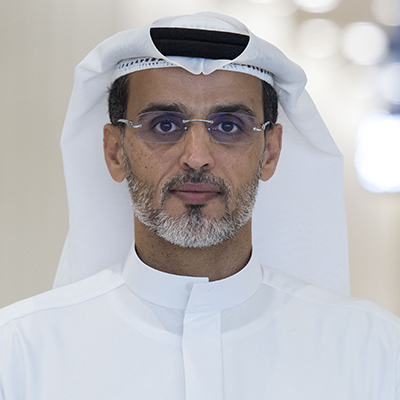

Vice-President of Terminal Operations, Dubai Airports
John Benny | Staff Reporter
As soon as the restrictions came into effect on March 26, 2020, Essa Al Shamsi, Vice-President of Terminal Operations at Dubai Airports, was left to deal with 1,200 confused and frustrated passengers at Dubai International Airport.
“On the day of the restrictions, we had tens of flights up in the air and we had people who were trying to get over here in the last minute,” said Al Shamsi.
“We ended up with around 1,200 people stuck over here, and those were a mix of residents, transiting passengers, and passengers who were trying to get over here in the last minute,” he said. “We managed to get a big proportion of them enter the country after subjecting them to the necessary tests and making the arrangement for their quarantine in the city itself.”
The airport executive’s task didn’t get any easier after that. Even with the lightning-fast response, the airport still had around 600 people, who had nowhere to go with the cancellation of flights and closure of international borders.
“Immediately, committees and groups were formed, along with the Ministry of Foreign Affairs, and the communication lines were established with various governments to arrange for repatriation flights,” said Al Shamsi.
The hardest part was catering to the individual needs of the passengers. “A few people had special needs, some people required special medication, which was not available at that time,” he said.
Al Shamsi recalls an incident where his team found a passenger who had not eaten for days. “We discovered that she didn't have a meal for two days and we found out she was very sensitive. She could only take gluten free food.”
Elderly couple stranded for 45 days
Perhaps the most heart-warming story to come out of the crisis was of an elderly couple who had to wait 45 days in the airport to get their approval to travel back.
“We were waiting for the authorities to allow them in as they weren't residents; they were from the categories of visa-on-arrival,” said Al Shamsi.
“By the time the approval came, the team had built a very close relationship with them. We looked after them very closely. They came back a couple of months later and the team received them and had some sort of celebration,” said the Dubai Airports official.
Pandemic challenge
Unlike other aviation disruptions, a pandemic produces a special kind of a challenge for the industry.
“We were short of resources as all our outsourced suppliers were ceased and stopped,” said Al Shamsi. “We had to look after the welfare of the staff and make sure we had minimum infection rates (or) our operations would have come to a complete halt,” he said.
Fortunately, for many, that wasn’t the case. Dubai Airports, which saw the first repatriation flight by Air France on April 1, 2020, went on to facilitate 4,100 such flights from April to July.
The initiative required Dubai Airports to work alongside several other government and aviation entities. And it all went very smoothly.
Al Shamsi said the passengers were segregated on the basis of their destination and nationality. The airport official added that some passengers wanted to continue with their final destination, while others preferred staying in Dubai.
"They (Ministry) actually coordinated with the [other] governments to come and repatriate [their citizens]," he added.
Essa Al Shamsi, Vice-President of Terminal Operations, Dubai Airports.